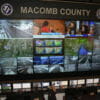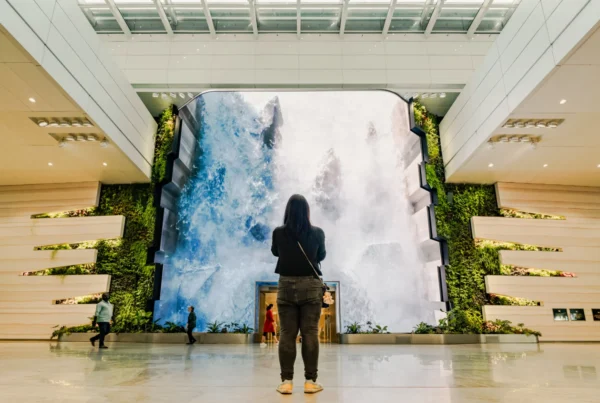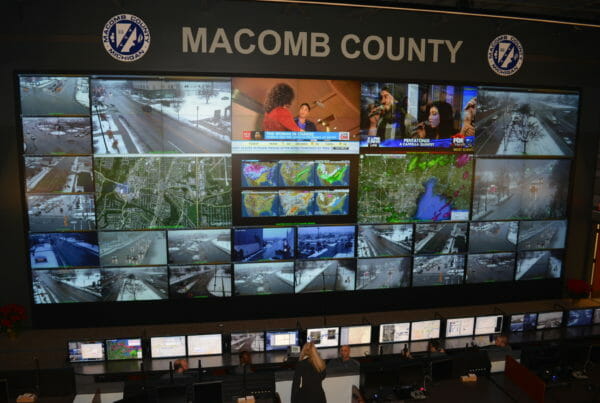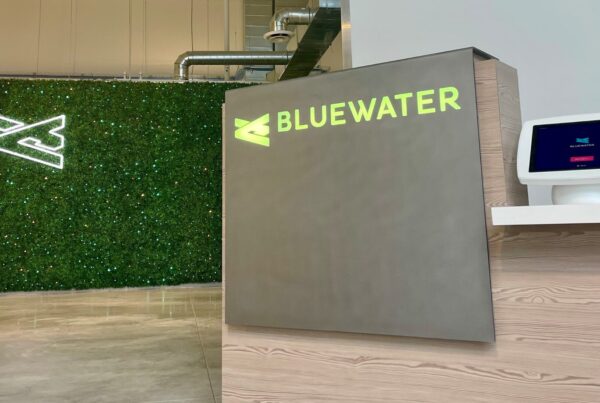Virtual Panel Discussion: Conference & Collaboration Trends
We’re off to InfoComm this month to network with our peers, soak up all the latest and greatest product releases, and have a chance to sit down and discuss hybrid workforce trends and how the workplace is evolving. Heading into the week we rounded up some of our subject matter experts at Bluewater including:
Bob Marsh – Chief Revenue Officer
Scott Schoeneberger – Managing Partner
Nick Marino – VP, Sales Workplace Technology
Kim Hale – VP of Strategic Consulting and Design
Derek Monette – Director of Technical Operations
Ben Lindsey – Technical Services Manager

Each panelist shared their thoughts on what they believe the future of conference and collaboration holds. Here is what they had to say!
The Evolving Workplace
The pandemic has forced companies to re-imagine their workplace strategy with an emphasis on safety, flexibility, and employee experience, all while balance employees working from the office and working from home. Many companies are re-designing their workspaces to accommodate a remote or hybrid workforce.
“Hybrid is the new normal. There’s now an emphasis on designing offices and meeting spaces for a hybrid experience. That means audio visual technology and supporting environmental elements that affect communication need to be a design consideration… not an afterthought. Going forward, acoustics and lighting must be considered as part of fundamental space planning.” Derek Monette, Director of Technical Operations at Bluewater
Companies will need to rethink how they utilize space in their offices and adopt innovative solutions to keep up with the need for updated technology in hybrid workspaces. Nick Marino says:
“A lot of companies are transitioning to smaller conference rooms that hold 4-6 people as opposed to larger spaces. We’re also seeing an increase in smaller huddle or collaboration spaces equipped with video to accommodate hybrid or remote employees.”
Technology that Enables the Hybrid Workforce
Over the course of the last few years, organizations have had to move quickly from implementing short term solutions for employees working remotely to enabling longer-term workplace strategies. Many companies are not yet investing in the right technology, but they will likely begin as hybrid work has accelerated in many organizations. Our Chief Revenue Officer, Bob Marsh says:
“In the future, every meeting space will need to be ready for a full-blown remote or hybrid meeting no matter who is there and who is not. Having proper lighting in addition to a great microphone and camera is essential.”
Remote working has been far from without its issues, on average it can take 10 minutes to even start a meeting due to tech related challenges. While there isn’t a quick fix to completely erase these obstacles, there is some technology companies can invest in to help minimize these issues.
“While I love seeing new products released that head us towards something reminiscent of Minority Report, I do believe the future of conferencing first involves better use of things we already have available to us,” says Scott Schoeneberger, Managing Partner at Bluewater. “We’ve just recently started to see the mass adoption of LED videowalls in more typical conference spaces, even though this tech has been available for years. The decreasing cost, and increased pixel pitch makes this a more viable option. I also believe the future of conference tech involves much more training – for both integrators & architects, and for end users. We’re still often asked to put technology into an all-glass type of conference room that’s not been given any acoustic treatment. Having everyone trained on the fundamentals of acoustic design can significantly improve the conference and collaboration experience before the technology is even deployed. This means technology is integrated into the building designs, not hung as an afterthought. Finally, simplicity and consistency in AV systems can go a long way to help end users understand how systems work so we don’t see as many delays in starting remote meetings.”
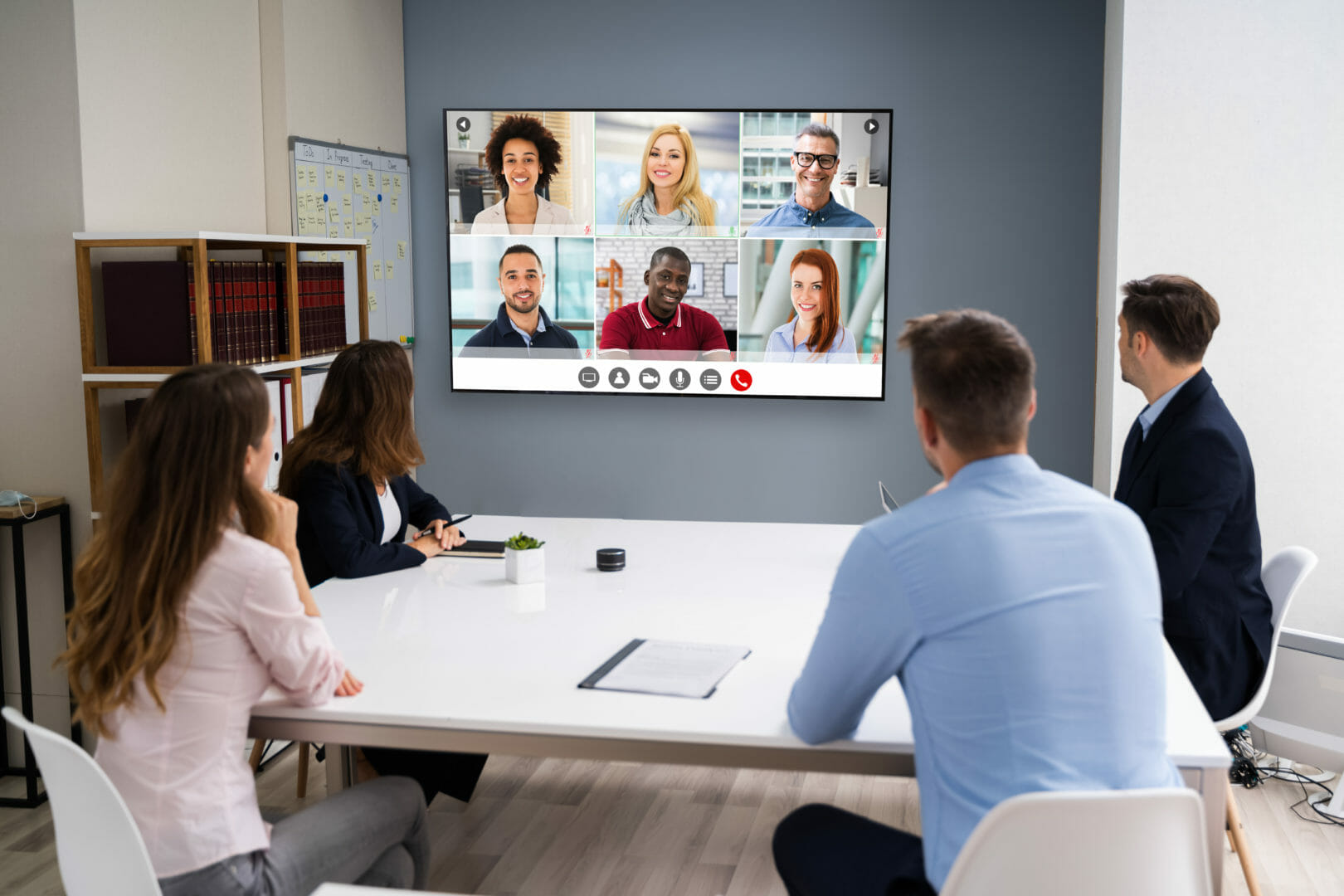
Nick Marino believes an increase in touch or wearable technology is a viable possibility in the future. “There is a pattern to either have more wearable technology and/or voice recognition technology that will in some ways take over what we currently use as touch technology. This is something that came up a lot during the pandemic because a lot of people were hesitant to use touch technology. There is also wearable technology such as devices that can be worn around someone’s wrist that will know who they are and their proximity to certain things. This technology could recognize an attendee walking into a space and trigger something in response – such as turning on audio and video conferencing, adjusting lighting, or even setting custom scenes.”
Kim Hale, our VP of Strategic Consulting and Design believes there may also be a place for artificial intelligence in the future. One example is smart video that can change screen layouts in real time to ensure that home-based participants are represented equally as those in the meeting room.
Speech to text could be another potential use for AI. Meetings can be transcribed in real time, which eliminates the need to take notes and participants can be more engaged during the meeting. This could allow for real time closed captioning as well.
Ben Lindsey, Technical Services Manager at Bluewater believes there will be a need for new wireless technology in the future.
Ben says, “A big problem is the wireless channels are all flooded. There is hardly any bandwidth anymore which is causing a lot of systems to malfunction. I predict there will be a new wireless technology that is outside the current FCC band.”
Redefining Company Culture
The high rate of remote and hybrid work that organizations continue to leverage is forcing them to redefine their company culture to translate to a hybrid work environment. Remote work has proven to be beneficial to employees but lack of in-person connection often drives feelings of separation. Kim challenged our panel with the question:
“How do you impart company culture across your whole employee footprint if people aren’t coming into the office?”
Creating a strong company culture in a remote or hybrid environment is something that companies will need to keep in mind now and in the future.
 Another trend that we are seeing across the board with many companies that we work with is the ability to try and attract people to come into the office through use of technology. This includes some really impactful experiential spaces, and LED, projection, or lighting-based art installations. There are many ways organizations can use technology to provide a more efficient working environment in the office as opposed to at home. This is going to be another initiative on a lot of company’s radars going forward.
Another trend that we are seeing across the board with many companies that we work with is the ability to try and attract people to come into the office through use of technology. This includes some really impactful experiential spaces, and LED, projection, or lighting-based art installations. There are many ways organizations can use technology to provide a more efficient working environment in the office as opposed to at home. This is going to be another initiative on a lot of company’s radars going forward.
Hear even more about the future of conferencing and collaboration and how the workplace is evolving Thursday, June 9th, at InfoComm where Scott Schoeneberger will be joining other industry leaders on a panel to discuss this topic.





